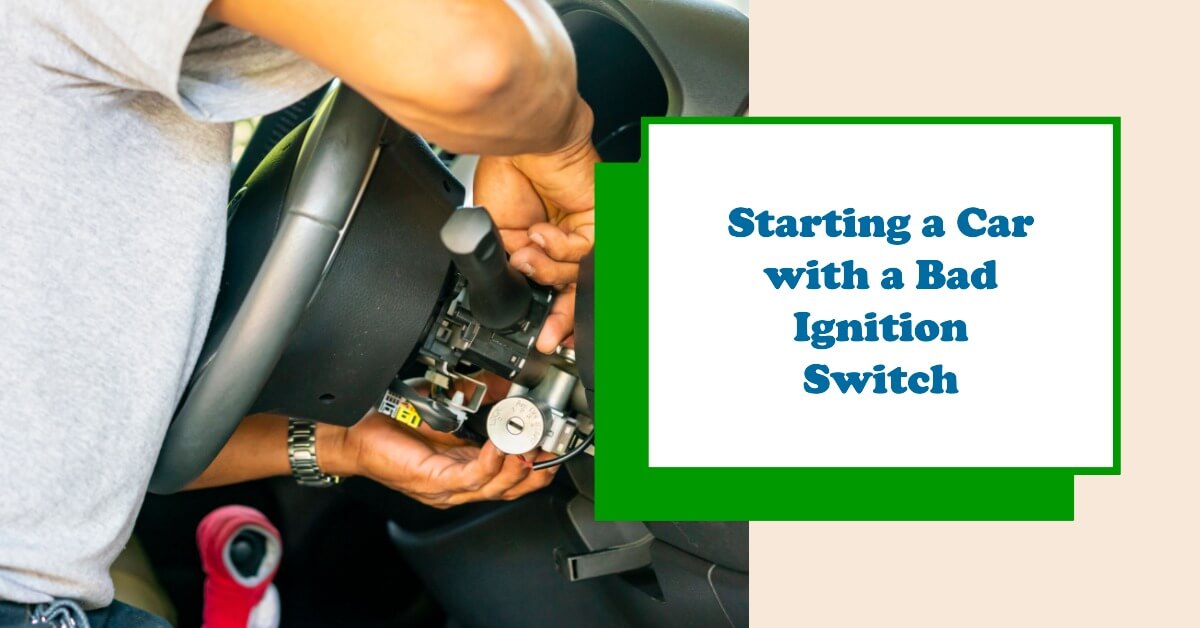Dealing with a faulty ignition switch can be frustrating, especially when you’re in a rush to hit the road. Thankfully, with a little know-how and some troubleshooting techniques, you can still start your car and get on your way.
In this guide, we’ll walk you through the steps to start a car with a bad ignition switch, while highlighting the signs of a malfunctioning switch and providing essential precautions for your safety. So, let’s dive in and get your wheels turning!
Table of Contents
ToggleSigns of a Bad Ignition Switch
Before we delve into the troubleshooting steps, it’s crucial to identify the signs that indicate a faulty ignition switch. There are a few signs that your ignition switch may be bad. These include:
- The car will not start
- The engine will not turn over
- The car will not stay running
- The power to the accessories will not turn on
- The key will not turn in the ignition
Steps to Start a Car with a Bad Ignition Switch
If you think your ignition switch is bad, there are a few things you can do to try to start your car. These include:
Try turning the key in different positions: Sometimes, the key will not turn in the ignition because it is not in the correct position. For example, if your car has an “ACC” position, try turning the key to that position before turning it to the “ON” position.
Tap on the ignition switch with a screwdriver: Sometimes, a gentle tap can loosen the switch and allow it to turn. Be sure to use a soft-tipped screwdriver to avoid damaging the ignition switch.
Spray WD-40 into the ignition switch: WD-40 can help to lubricate the switch and make it turn more easily. Be sure to spray the WD-40 into the keyhole, not into the ignition switch itself.
Replace the ignition switch: If the above steps do not work, you will need to replace the ignition switch. This is a relatively simple task that can be done by most people with basic mechanical skills.
Remember, these alternative methods are temporary solutions, and it’s important to address the underlying ignition switch issue for long-term reliability.
Precautions and Safety Tips
If you are going to try to start your car with a bad ignition switch, there are a few precautions you should take. These include:
Disconnect the Battery: Before inspecting or working on any electrical components, disconnect the car battery to prevent accidental electrical shocks or short circuits.
Protective Gear: Wear protective gloves and goggles to shield your hands and eyes from potential hazards during the troubleshooting process.
Avoid Moving Parts: Exercise caution around moving engine components, ensuring your hands, clothing, and tools stay clear of any potential entanglement.
Fire Safety: Be prepared for potential fuel leaks or engine fires by having a fire extinguisher within reach and knowing how to use it.
When to Replace the Ignition Switch
If you think your ignition switch may be bad, it is important to have it replaced as soon as possible. A bad ignition switch can be a safety hazard. It can also prevent you from starting your car.
There are a few reasons why you might need to replace your ignition switch. These include:
- The ignition switch is worn out.
- The ignition switch is damaged.
- The ignition switch is corroded.
- The ignition switch is faulty.
If you are experiencing any of the problems listed above, it is important to have your ignition switch replaced as soon as possible. A bad ignition switch can be a safety hazard. It can also prevent you from starting your car.
Conclusion
Dealing with a bad ignition switch doesn’t have to leave you stranded or frustrated. By understanding the signs of a malfunctioning switch and following the troubleshooting steps outlined in this guide, you can start your car and get back on the road.
However, remember that temporary solutions are just that – temporary. It’s crucial to address the underlying issue and consider ignition switch replacement for long-term reliability.
Always prioritize safety during the troubleshooting process, follow the precautions we’ve outlined, and consider seeking professional help if you’re uncertain or lack the necessary expertise.
With the right approach and a little bit of patience, you’ll be able to overcome ignition switch challenges and keep your wheels turning smoothly.
So, the next time your car gives you trouble with the ignition switch, take a deep breath, follow the steps outlined in this guide, and get ready to hit the road with confidence!
























